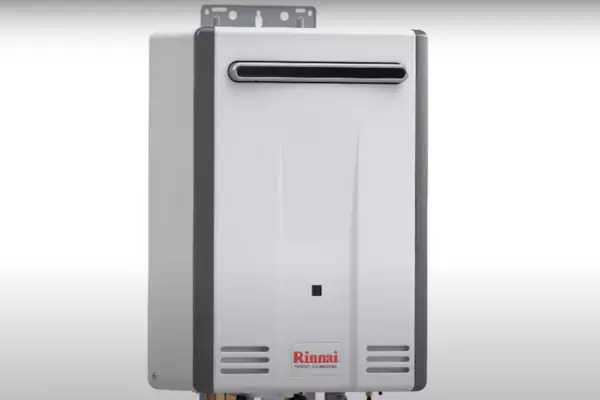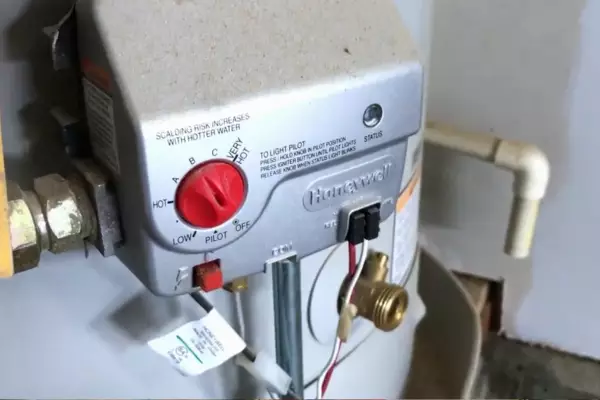The world of water heaters is evolving, and tankless water heaters are at the forefront of this evolution. These units, known for their efficiency and space-saving characteristics, are gaining popularity rapidly. Yet, like any other appliances, they come with their unique requirements, one being the expansion tank.
An expansion tank plays a crucial role in maintaining the overall health and functionality of a tankless water heater. Without an expansion tank, a tankless water heater can experience extreme pressure changes, potentially resulting in damage.
As important as the expansion tank is, its placement carries equal significance. Where the tank is installed can drastically impact the performance and longevity of your tankless water heater.
Contents
Tankless Water Heaters and Expansion Tanks
What is a Tankless Water Heater
Tankless water heaters, often known as on-demand heaters, operate without a storage tank. They heat water directly as it flows through the unit, offering a constant supply of hot water without the need to wait for a storage tank to fill up.
Does a Tankless Water Heater Need an Expansion Tank
The question arises if tankless water heaters, given their different operational mechanism, require expansion tanks. The answer is a resounding yes. Expansion tanks are critical in absorbing excess water volume that occurs due to heating, thereby preventing pressure spikes in the plumbing system.
The Role of Expansion Tanks in Tankless Water Heaters
An expansion tank is a safety device that helps handle the thermal expansion in tankless water heaters. It’s designed to accommodate extra water volume created when water is heated. This process prevents the building pressure from causing damage to the plumbing system and the water heater.

Essential Facts about Expansion Tanks
Expansion Tanks: What Are They?
Expansion tanks, often cylindrical in shape, are auxiliary storage vessels strategically integrated into the plumbing systems of residential and commercial buildings. Inside, they contain two distinct sections divided by a flexible rubber diaphragm. The upper portion of the tank is filled with compressed air, while the lower part is left empty, ready to receive excess water from the water heater.
Functions and Working Principles of Expansion Tanks
Primarily, an expansion tank serves as a protective device against water damage caused by thermal expansion. Here’s a more detailed breakdown of how it works:
- Thermal Expansion: As water heats up, it expands, causing a rise in pressure within the plumbing system. This phenomenon, known as thermal expansion, necessitates additional space to accommodate the increased water volume.
- Pressure Absorption: The expansion tank acts as a pressure release system for this extra water volume. As the water volume in the system increases, the excess water enters the expansion tank, compressing the air section and alleviating pressure on the plumbing system.
- Pressure Regulation: Once the water heater shuts off and water cools, the expanded water contracts. The compressed air in the expansion tank then pushes the water back into the plumbing system, maintaining a balanced pressure.
Positioning of Expansion Tanks: Key Considerations
Factors Influencing Expansion Tank Positioning
Various factors can impact where an expansion tank should be placed. For instance, the layout of your plumbing system and the available space around your tankless water heater are significant considerations.
Furthermore, the local building code may dictate specific requirements for expansion tank positioning, so it’s advisable to consult with a licensed plumber or local authorities for guidance.
Importance of Correct Positioning
Correct positioning is paramount to ensure the expansion tank functions efficiently and safely. A properly positioned tank can readily absorb the thermal expansion, relieving pressure and avoiding potential damage to the tankless water heater and plumbing system.
Challenges with Incorrect Placement
Incorrect placement of the expansion tank can lead to a host of problems. For instance, if the tank is too far from the water heater, it might not be as effective in managing pressure fluctuations. This can cause undue stress on your plumbing system, increase the risk of leaks, and potentially lead to premature failure of your tankless water heater.

Ideal Placement for Expansion Tanks in Tankless Water Heaters
Basics of Expansion Tank Placement
As a general rule, expansion tanks are installed on the cold water supply line that leads to the tankless water heater. This location is strategic as it allows the expansion tank to absorb excess water volume efficiently during the heating process.
Ideal Location: Cold Water Line
While the cold water line is the recommended place for the expansion tank, its exact location along the line can vary. Ideally, it should be close to the water heater but not necessarily right next to it. Also, the tank should be installed in an upright position to allow the diaphragm to function correctly.
Benefits of Correct Expansion Tank Installation
Positioning the expansion tank correctly can provide multiple benefits:
- Enhanced Heater Efficiency: The correct placement ensures the tank functions optimally, reducing pressure in the system, which allows the heater to operate more efficiently.
- Reduced Risk of Leaks: By managing the pressure in the system effectively, the risk of leaks in your plumbing system is minimized.
- Longer Lifespan: A correctly installed expansion tank can also extend the lifespan of your tankless water heater, saving you money on potential replacements and repairs.
Step-by-Step Guide: Expansion Tank Installation
Required Tools and Materials
To install an expansion tank, you’ll need several tools and materials, including:
- Expansion tank suitable for your water heater capacity
- Teflon tape to seal connections
- Adjustable wrenches to tighten connections
- Water to pre-charge the expansion tank (if necessary)
Pre-Installation Preparation
Before you begin the installation process, there are a few preparatory steps to follow:
- Shut off the water supply: This prevents any water flow during installation.
- Drain the cold water line: To prevent water from spilling during installation, ensure the water line is drained.
Installation Process: A Detailed Guide
Here’s a detailed step-by-step guide to installing your expansion tank:
- Apply Teflon tape on the thread of the tank connection to create a waterproof seal.
- Connect the expansion tank to the cold water line near the water heater.
- Use the adjustable wrenches to tighten the connection, ensuring it’s secure but not overtightened.
- Once the tank is connected, restore the water supply and inspect the area for any leaks. If there are no leaks, the installation process is complete.

Maintenance Tips for Expansion Tanks
Routine Check-up and Maintenance
Regular inspection and maintenance can significantly enhance the life and performance of your expansion tank. This typically involves checking the air pressure in the tank every six months, inspecting for any signs of damage or wear, and scheduling professional inspections as recommended by the tank’s manufacturer.
Signs Your Expansion Tank Requires Attention
Certain signals indicate your expansion tank may require servicing:
- Decreased water pressure: If you notice a sudden drop in your water pressure, it could indicate that the expansion tank is not functioning correctly.
- Visible water leaks: Water pooling around the expansion tank is a clear sign that it might need repair or replacement.
- High system pressure: If the pressure in your plumbing system remains consistently high, even when there isn’t any water use, your expansion tank may not be absorbing the extra volume effectively.
Essential Maintenance Practices
Regular maintenance practices for your expansion tank include:
- Checking the pressure in the tank at least twice a year
- Scheduling professional inspections yearly
- Replacing the expansion tank every five to ten years, depending on its condition and manufacturer guidelines.
Frequently Asked Questions
How often should I inspect my expansion tank?
For best results, it’s recommended to inspect your expansion tank every six months. However, if you notice any of the warning signs, such as leaks or high system pressure, immediate inspection is advisable.
Can I install an expansion tank by myself?
While it’s possible to install an expansion tank yourself, it’s recommended to have a professional do it. This ensures proper installation and adherence to local building codes.
What is the lifespan of an expansion tank?
Typically, an expansion tank lasts for about five to ten years, depending on the water quality and regular maintenance.
Conclusion
The importance of an expansion tank in a tankless water heater system cannot be understated. These units ensure the seamless operation of your water heater, taking on the critical role of managing thermal expansion.
Proper placement of the expansion tank enhances the performance and longevity of the heater. By absorbing the additional volume of expanded water, it maintains optimal pressure, preventing potential damage to the plumbing system.
In essence, an expansion tank is an unsung hero of your tankless water heater setup, working behind the scenes to deliver hot water efficiently and safely.
